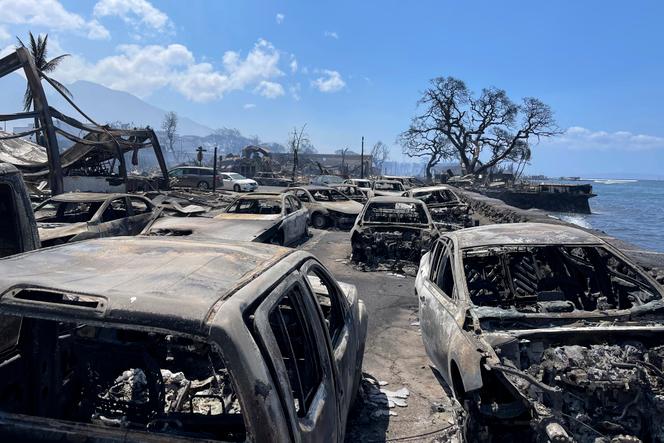


A search of the wildfire devastation on the Hawaiian island of Maui on Thursday, August 10, revealed a wasteland of obliterated neighborhoods and landmarks charred beyond recognition, as the death toll rose to at least 53 and survivors told harrowing tales of narrow escapes with only the clothes on their backs.
A flyover of historic Lahaina showed entire neighborhoods that had been a vibrant vision of color and island life reduced to gray ash. Block after block was nothing but rubble and blackened foundations, including along the famous Front Street, where tourists shopped and dined just days ago. Boats in the harbor were scorched, and smoke hovered over the town, which dates to the 1700s and is the biggest community on the island’s west side.
"Lahaina, with a few rare exceptions, has been burned down," Hawaii Governor Josh Green told The Associated Press. More than 1,000 structures were destroyed by fires that were still burning, he said.
The death toll will likely rise as search and rescue operations continue, Green added, and officials expect it will become the state’s deadliest natural disaster since a 1961 tsunami killed 61 people on the Big Island. "We are heartsick," Green said.
Fueled by a dry summer and strong winds from a passing hurricane, the fire started Tuesday and took Maui by surprise, racing through parched growth covering the island and then feasting on homes and anything else that lay in its path.



The official death toll stood at 36 late Wednesday, making it the deadliest US wildfire since the 2018 Camp Fire in California, which killed at least 85 people and laid waste to the town of Paradise. The Hawaii toll could rise, though, as rescuers reach parts of the island that had been inaccessible due to the three ongoing fires, including the one in Lahaina that was 80% contained on Thursday, according to a Maui County news release. More than 270 structures have been damaged or destroyed, and dozens of people have been injured, including some critically.
"We are still in life preservation mode. Search and rescue is still a primary concern," said Adam Weintraub, a spokesperson for Hawaii Emergency Management Agency. Search and rescue teams still won't be able to access certain areas until the fire lines are secure and they’re sure they'll be able to get to those areas safely, Weintraub added. The flames left some people with mere minutes to act and led some to flee into the ocean.
Tourists were advised to stay away, and about 11,000 flew out of Maui on Wednesday with at least 1,500 more expected to leave Thursday, according to Ed Sniffen, state transportation director. Officials prepared the Hawaii Convention Center in Honolulu to take in the thousands who have been displaced.
Wildfires aren't unusual in Hawaii, but the weather of the past few weeks created the fuel for a devastating blaze, and once ignited, the high winds created the disaster, said Thomas Smith an associate professor in Environmental Geography at the London School of Economics and Political Science.
Major General Kenneth Hara, of the Hawaii State Department of Defense, told reporters Wednesday night that officials were working to get communications restored, distribute water and possibly add law enforcement personnel. He said National Guard helicopters had dropped 150,000 gallons (568,000 liters) of water on the fires.
The Coast Guard said it rescued 14 people who jumped into the water to escape the flames and smoke. Maui County Mayor Richard Bissen Jr. said Wednesday that officials hadn't yet begun investigating the immediate cause of the fires.
President Joe Biden declared a major disaster on Maui. Traveling in Utah on Thursday, he pledged that the federal response will ensure that "anyone who’s lost a loved one, or whose home has been damaged or destroyed, is going to get help immediately." Biden promised to streamline requests for assistance and said the Federal Emergency Management Agency was "surging emergency personnel" on the island.
